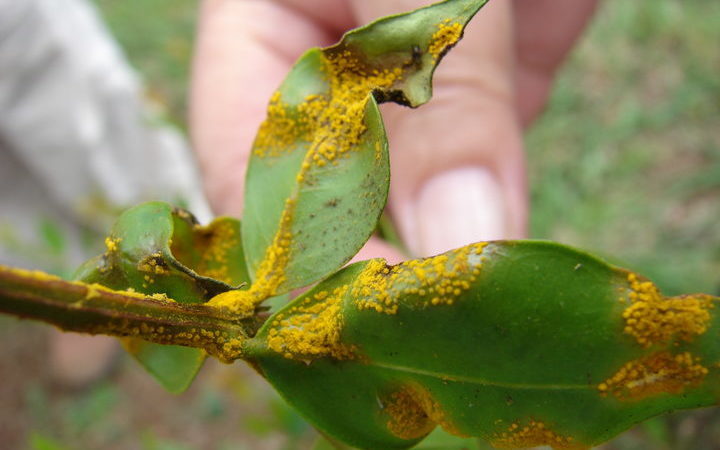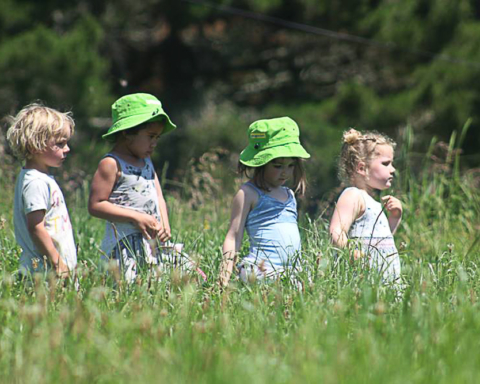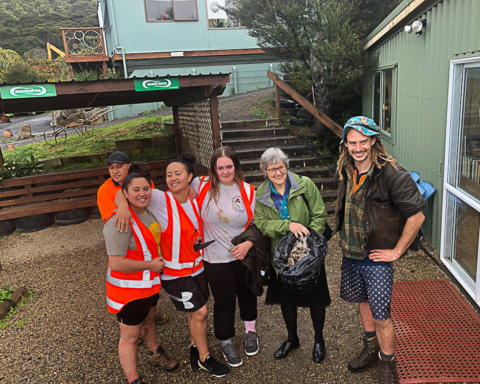The Department of Conservation (DOC) is closing the Mt Karioi summit tracks, near Raglan, following a confirmed finding of myrtle rust. It will be closed to the public until further notice.
The fungus was discovered on a vine rātā (Metrosideros diffusa), by DOC staff performing surveillance while undertaking seed collection work. DOC is closing the affected area while a surveillance team determines the scale of this infestation.
“We are investigating the extent of the outbreak and exploring options to manage the risk of spread,” says Phil Hancock, who is leading DOC’s response.
Since it was first discovered on mainland New Zealand in May 2017, myrtle rust has become widespread through much of the North Island.
This is the second finding on public conservation land, following confirmation of myrtle rust on Mt Messenger in Taranaki a month ago.
“It’s disheartening that myrtle rust has been detected on conservation land again, however it’s not unexpected,” says Mr Hancock.
The recent warm weather has been optimal for myrtle rust and, with the yellow powdery spots appearing on leaves and new plant shoots, new detections have increased in a number of regions.
People are encouraged to check myrtle plants – particularly ramarama, pohutukawa, lily pilly, manuka and rata. Look for any sign of a bright yellow, powdery eruption, or leaves that are buckled or twisted, or with dry grey or brown pustules.
It’s really important not to touch the plants or brush against them, as this can disrupt the spores and speed up its spread.
Any suspected cases of myrtle rust can be reported to the biosecurity freephone number – 0800 80 99 66. MPI will investigate suspected cases, track and monitor its spread, and collect information to help understand the disease’s impact on New Zealand.
More information on myrtle rust can be found on http://mpi.govt.nz/protection-and-response/responding/alerts/myrtle-rust
Department of Conservation
Myrtle Rust facts:
- Myrtle rust (Austropuccinia psidii) is a fungi that attacks plants belonging to the Myrtaceae family, also known as the myrtle family. This includes some of our most iconic indigenous plants – pohutukawa, rata, manuka, kanuka, and ramarama, as well as exotic myrtles like guava, bottlebrush and lily pilly.
- It is found in many parts of the world including New Caledonia and all along Australia’s eastern seaboard and in the Kermadec group north of New Zealand.
- Myrtle rust spores are microscopic and can easily spread across large distances by wind, or via insects, birds, people, or machinery.
- It was first discovered on mainland New Zealand in May 2017. Evidence suggests the fungus arrived in New Zealand carried by strong winds from Australia where it is well established all down the eastern coast.
- The Ministry for Primary Industries (MPI) and the Department of Conservation (DOC) are working to try to contain it and protect New Zealand’s unique native species. This includes a seed-banking programme.
- A large operation is underway to determine where myrtle rust is and how it should be managed in the future.
- As it becomes widespread, myrtle rust will impact many of NZ’s Myrtaceae.











